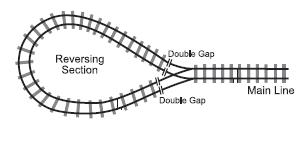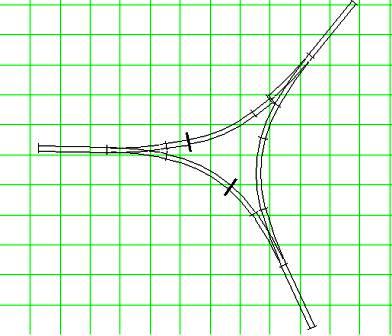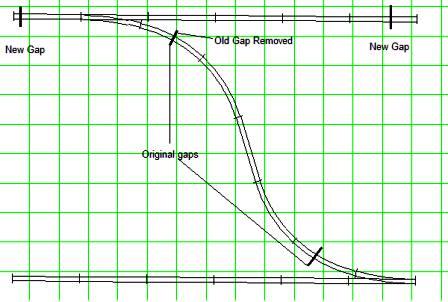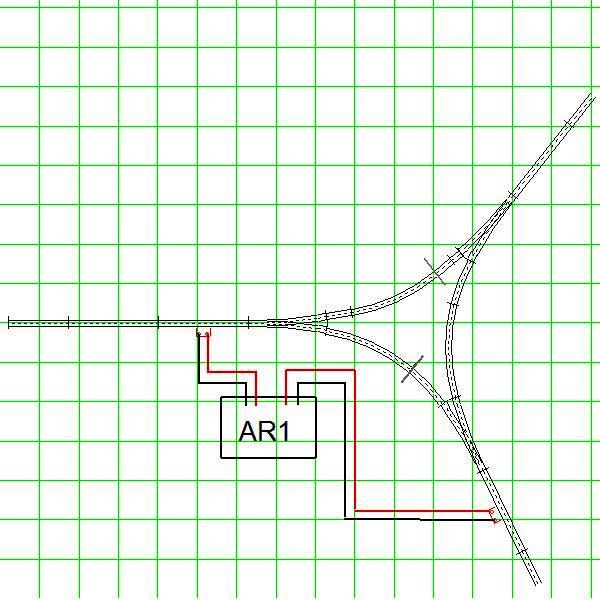In earlier generations of model railroading, the reverse loop (reversing section) was the bane of many model railroaders.

As the rails of a track come back upon themselves, an electrical short circuit is created. In the analog control world, the solution is to use toggle switches and special wiring to allow the locomotive to move on to the next block. Electromechanical solutions relying on relays and track detectors can also be used to automate reversing on an analog layout. The wye is another example of a reversing section on a layout.

One of the advantages of digital command control is that it simplifies many of the electrical aspects of model railroad layouts. Nowhere is this more evident than with the auto-reversing devices available to handle the complexity of the reverse loop. By using an autoreverser such as the AR1 or autoreversing features of power management devides like the PM42, the reverse loop electrical problem is eliminated.
Auto Reversing Tips:
- The reversing section must be longer than your longest train.
- There can be only one train in the reversing section at any given time.
- You may have to experiment with insulating (dopuble) gap locations to get the best operation.
The reverse loop must be long enough to handle your longest train
This is especially true if you have lighted passenger cars or freight cars with resistance wheelsets. When the train exits the reversing section, the autoreversing device senses both the reverse section and the section of track which the train is entering and matches the polairty of the DCC signal for both sections. This sensing function may need to be adjusted to prevent false readings by the automatic reversing device. If you are not getting satisfactory results, consult the instructions for the device you are using to determine how to make these adjustments.
There can be only one train in the loop at any given time
Because the autoreversing device is sensing the short circuit caused when a train crosses the isolated gaps into or out of the auto reversing section of track, there can only be one train inside the reversing section at a time to avoid a second reading that might cause the first train that entered the auto reversing section to change direction unexpectedly.
You may have to experiment with insulating gap locations
Although the track gap locations shown on a track plan are probably in the locations that will provide optimal operation, you may have to experiment. Many track plans were drawn at a time when toggle switches were the only answer. In most cases, these reversing sections were drawn as small as possible to minimize operator inconvenience. With DCC, you may need to expand the size of the reversing section to accomodate your longest train. See the example below:

In this example, the original reversing section was limited to the area between the turnouts. Once the railroad was in operation, it was discovered that trains with lighted passenger cars would "confuse" the AR1, so the reversing section was expanded a bit. Since the AR1's operation is automatic, it didn't matter if trains were operating on the reversing section or on the normal mainline track. With the defined reversing segment made a bit larger, trains with lighted passenger cars would be completely inside the reversing segment before the AR1 operated.
Here, an example of a turning wye, controlled by an AR1 auto reversing unit:
